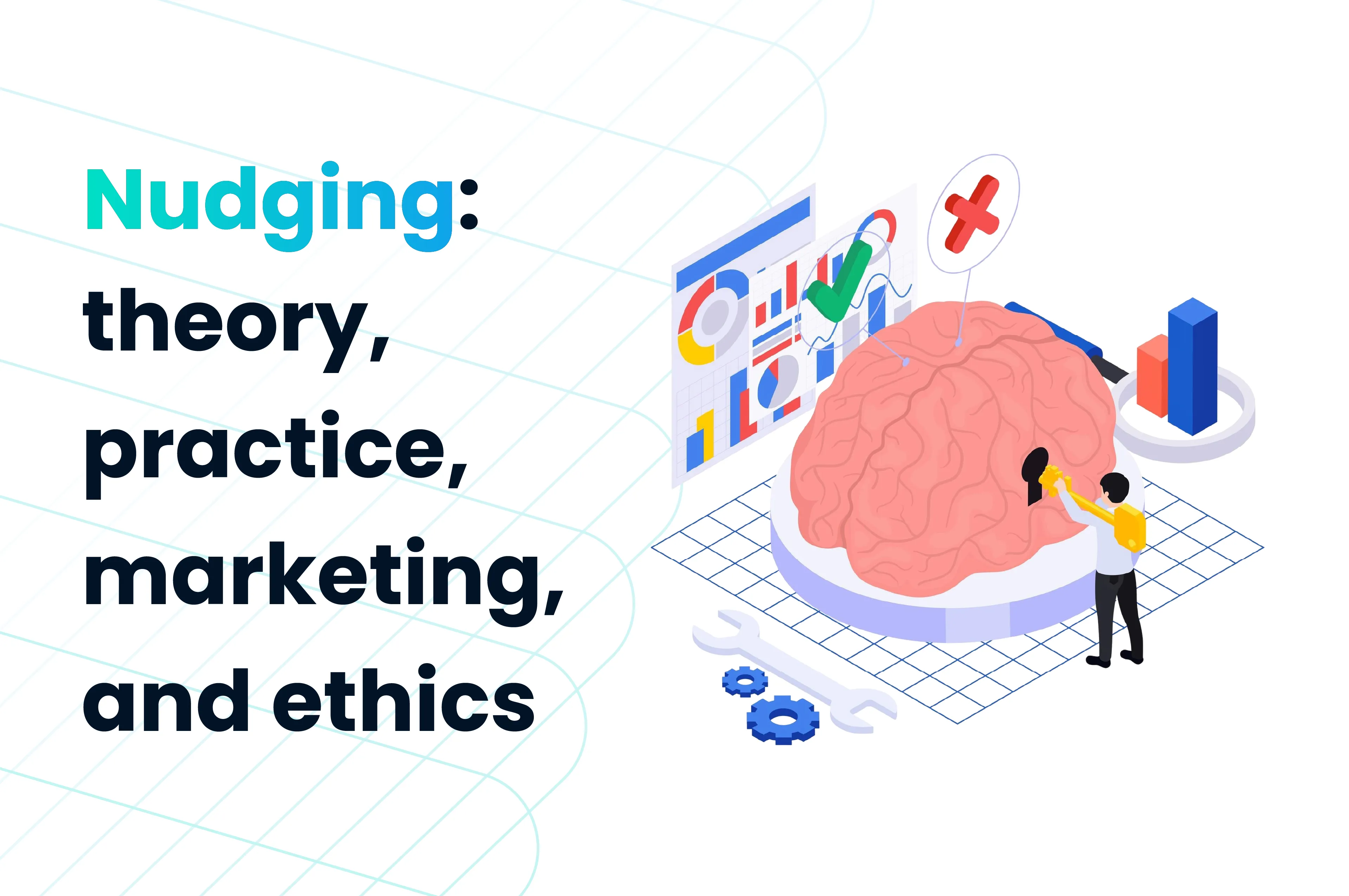Understanding nudging: theory, practice, marketing, and ethics
In a world overflowing with choices, from the cereal aisle to complex financial decisions, how we make decisions matters more than ever. This is where the concept of nudging steps in, a subtle yet powerful force shaping our behavior without restricting our options. But what exactly is nudging, where does it come from, and how is it used (or misused) in marketing?

What is nudging?
Nudging refers to subtly guiding people toward certain behaviors or decisions without coercion or significant financial incentives. It’s about changing the environment or “choice architecture” to encourage better decisions while preserving freedom of choice.
The term was popularized by Richard Thaler and Cass Sunstein in their influential 2008 book “Nudge: Improving Decisions About Health, Wealth, and Happiness”. A nudge doesn’t ban options or significantly change economic incentives, it simply makes some choices easier or more prominent.
Theoretical background: behavioral economics
Traditional economics assumes humans are rational agents who always make decisions in their best interest. Behavioral economics, however, incorporates insights from psychology, acknowledging that humans are predictably irrational.
Key principles behind nudging include:
-
Loss aversion: People prefer avoiding losses over acquiring gains
-
Default bias: People tend to stick with the default option
-
Social proof: People are influenced by what others are doing
-
Present bias: We prioritize immediate rewards over long-term benefits
These cognitive biases can lead to poor decisions. Nudging aims to steer people toward better outcomes by designing environments that account for these biases.
Famous practical examples of nudging
-
Organ donation opt-out systems
Countries with opt-out systems (where citizens are automatically enrolled unless they opt out) have significantly higher organ donor rates than opt-in countries. This plays on default bias. -
Fly in the urinal (Schiphol Airport, Amsterdam)
A tiny image of a fly placed in urinals encourages better aim, reducing cleaning costs. It’s a visual nudge toward hygiene. -
Healthy food placement in cafeterias
Placing fruits and vegetables at eye level increases the likelihood that people choose them, without removing unhealthy options. -
Energy bills with peer comparisons
Some utility companies show customers how their energy use compares to neighbors, tapping into social proof to reduce consumption.
Nudging in marketing
In marketing, nudging can be a powerful tool to drive consumer behavior, from improving customer experience to increasing conversions.
Applications of nudging in marketing
-
Default settings in subscriptions
Auto-renewal as the default option keeps customers subscribed unless they actively cancel. -
Limited-time offers and scarcity
Phrases like “Only 3 left in stock!” play on loss aversion and urgency bias. -
Social proof in E-commerce
Showing “500 people bought this in the last 24 hours” encourages buyers to conform. -
Framing prices
Presenting a product as “Only $1 a day” instead of “$365/year” makes it feel more affordable. -
Pre-selected options in checkout
Pre-ticking options like “Add travel insurance” nudges customers into buying additional services.
Want to learn more?
If we sparked your interest in behavioral economics, check out our article on the fundamentals of behavioral economics.
The ethics: nudging vs. manipulation
The fine line between nudging and manipulation lies in transparency and intent. A nudge should benefit the individual or society, not exploit users for profit without their awareness.
When nudging is misused
-
Dark patterns: Interfaces that mislead users (e.g., making opt-out nearly impossible)
-
Hidden defaults: Auto-enrolling users in costly services without clear communication
-
Overuse of scarcity or fear: Creating false urgency or social proof
In unethical hands, nudges become coercive or deceptive. This erodes trust and can harm brand reputation.
Conclusion: designing with responsibility
Nudging is neither inherently good nor bad, it’s a design strategy. Used ethically, it can encourage healthier habits, smarter financial decisions, and smoother customer journeys. In marketing, responsible nudging can build customer loyalty and improve UX. Misused, it can cross into manipulation, sacrificing trust for short-term gains.
As Thaler puts it, “If you want to encourage people to do something, make it easy.” That’s the essence of nudging, designing choices that help people, not trick them.
Would you like to implement nudging in Your business?
Contact our digital marketing experts today!